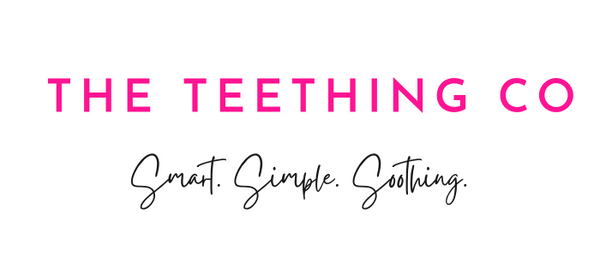
The Ultimate Teething Survival Guide for Parents
Teething can be a tough time for both babies and parents. The drool, the fussiness, the sleepless nights—it’s all part of the journey. But it doesn’t have to be overwhelming. With the right tools, techniques, and understanding, you can confidently handle this developmental stage.
Welcome to your ultimate teething survival guide—packed with practical advice, proven remedies, and must-have products to help your baby (and you) through the teething stage.
What Is Teething and When Does It Start?
Teething is when your baby’s teeth begin to break through their gums. Most babies start teething between 4 to 7 months, though some begin earlier or later. The process continues until around age 2 or 3.
Common Teething Symptoms:
-
Excessive drooling
-
Chewing on hands or objects
-
Irritability or crankiness
-
Red, swollen gums
-
Trouble sleeping
-
Mild fever or flushed cheeks
Not all babies experience every symptom—but if your little one is showing several of these signs, teething is likely the cause.
Must-Have Products for the Teething Stage
If you're preparing for teething or currently navigating it, having the right tools makes all the difference. Here are some of the best teething products for soothing sore gums:
1. Teething Toys
Choose toys made from safe, non-toxic materials like food-grade silicone or natural rubber. Look for textures, easy-to-hold shapes, and freeze-friendly designs.
Pro tip: Store a couple in the fridge for extra gum-soothing power.
2. Teething Necklaces (for Parents to Wear)
These stylish silicone necklaces double as chewable relief for babies while you hold them. Great for outings and cuddles!
3. Sensory Toys
Multisensory teethers with crinkly fabric, textures, and colors keep your baby engaged while easing discomfort.
4. Natural Teething Gels or Balms
Choose gentle, baby-safe formulas with ingredients like chamomile. Avoid products with lidocaine or benzocaine, which can be harmful.
Teething Baby Tips: How to Soothe a Teething Baby
Your baby’s comfort is the top priority. Here are tried-and-true ways to help them feel better:
1. Cold Relief
A chilled (not frozen) teether or damp washcloth can reduce inflammation and numb sore gums.
2. Gentle Gum Massage
Wash your hands and use a clean finger to gently rub your baby’s gums. It provides quick comfort.
3. Distraction Through Play
Play is a natural pain reliever. Sensory toys and activities keep your baby engaged and less focused on discomfort.
4. Comfort Feeding
Breastfeeding or bottle-feeding can calm a teething baby. Just watch for extra biting—some babies nip while teething!
5. Extra Cuddles
Skin-to-skin time and cuddles release oxytocin, calming your baby (and you!) during tough moments.
Natural Teething Remedies (That Actually Work)
Parents often look for natural ways to soothe teething babies. Here are a few safe, effective ideas:
-
Chamomile tea-soaked cloth: Freeze a cloth soaked in cooled chamomile tea for a calming, chewable solution.
-
Frozen fruit in a mesh feeder: Offer frozen banana or mango to older babies (6+ months) as a tasty and soothing treat.
-
Amber teething necklaces: While popular, these come with risks. Always supervise if using, and never let baby sleep with one on.
Teething at Night: How to Help Your Baby Sleep
One of the toughest parts of teething is the impact on sleep. Here's how to manage those restless nights:
-
Stick to a routine: Keep bedtime predictable and calming.
-
Elevate the mattress slightly: A small incline can relieve pressure and ease congestion caused by drooling.
-
Offer a teether before bed: Let baby gnaw for a few minutes to ease pain before sleep.
-
Use a teething-safe balm: Apply a soothing gel just before bed if needed.
And remember: this stage won’t last forever. You're doing great.
When to Call the Doctor
While most teething symptoms are mild, keep an eye out for signs that might point to something else:
-
High fever (over 38°C / 100.4°F)
-
Diarrhea
-
Rash
-
Ear pulling (could indicate an ear infection)
If your baby seems unusually uncomfortable or develops concerning symptoms, it’s always best to check with your healthcare provider.
Your Teething Survival Checklist
Here’s a quick list of essentials to keep on hand:
✅ 3–5 silicone or rubber teethers
✅ 1 teether for fridge use
✅ Soft bibs for drool protection
✅ Gum-safe teething gel or balm
✅ Cold washcloths
✅ Sensory play toys
✅ Comfort items (blankets, loveys)
Tip: Keep extras in your nappy bag, car, and lounge room so you’re always prepared.
Final Thoughts
Teething is a natural milestone in your baby’s development, but it doesn’t have to be stressful. With this teething survival guide, you’re better equipped to keep your little one comfortable, calm, and smiling through the discomfort.
Looking for safe, sensory-rich, and soothing teething toys?
Explore The Teething Co’s collection designed with your baby’s needs in mind—because comfort and fun should go hand in hand.
